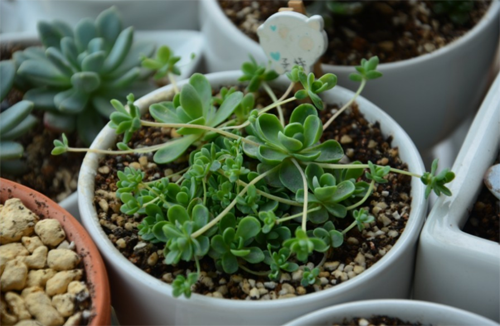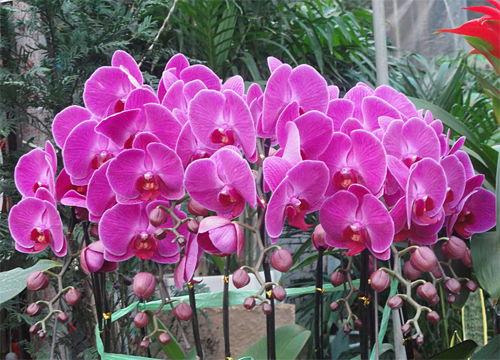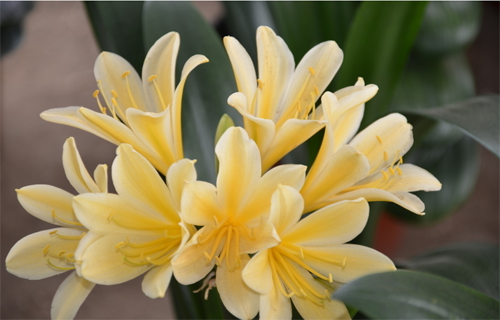How does the son hold the lotus flower to raise the leaves to turn yellow and dry?
It is relatively simple for the son to hold the lotus flower to feed, but it is not easy to raise the son holding the lotus flower to look good. In the process of breeding, it is also easy to see the leaves yellowing and withering. As long as the leaves are not good-looking, the whole son holding the lotus flower is very ugly. In the process of holding the lotus flower, what if the leaves turn yellow and dry? Let's take a look at the Women's Network:

How does Zi hold Lianhua to raise:
The seed holding the lotus flower in the spring and autumn growing season can give it enough water, and the soil can be watered once when it is nearly dry. In summer, the seed holding the lotus flower to enter the dormant period should pay attention to controlling the water, and a small amount of water supply is good when watering (when the seed holds the lotus flower to enter the dormant period, like the mountain rose, the leaves will be wrapped up, very obvious, like a small cabbage). Watering time can choose the warmer period near noon in winter and cooler in the afternoon or evening in summer.
Summer temperature of 30 ℃, can hold the lotus flower to the bright place without direct light, strengthen ventilation, a small amount of watering, watering time can choose at night, if the seed holding lotus leaves wrapped up, it is to enter the dormant period, we should pay attention to reduce the amount of watering. At the end of summer, the seeds hold the lotus leaves to spread out, enter the growing period, and then gradually increase the light. Winter temperature is not lower than 0 ℃, the seed holding lotus can generally continue to grow, no matter how low it is to move into the indoor overwintering, try to choose the sunny indoor, can reduce the amount of watering.
The son holds the lotus flower than likes the strong light, and the weak plant type scatters the leaves and even the stems stretch out, stretching their necks one by one. It is too ugly to look. It should be noted that during the growing period, this leaf is indeed relatively scattered, but it is easy to distinguish it from the overgrown one. It depends on how long the neck stretches.
What if the lotus leaves turn yellow and wither:
It is normal for the seeds to hold the lotus leaves during the dormant period. During the dormant period, the new leaves need to be wrapped in dry yellow leaves. If it is not dormant, you need to water less and bask in the sun more. It will be fine after a while.
Zi Zhi Lianhua has different requirements on temperature and soil in different seasons. it is not easy to raise a good-looking Zi Lianhua, especially during the dormant period, when you see dry yellow leaves.
What about the yellow and withered leaves of the lotus? what is the reason for the yellow of the lotus (cutting withered leaves and spraying)
Lotus, also known as lotus, is one of the top ten famous flowers in China. In nature, any plant can be "sick". For example, the yellow and withered leaves of the lotus are its symptoms. What if the lotus leaves turn yellow and wither? First of all, we need to find its symptoms, and then prescribe the right medicine. Let's take a look at the cause of lotus yellowing with Xiaobian.
What is the cause of lotus yellowing, light and temperature
The lotus has been loved by people since ancient times. We talked about how to raise the lotus, the function and effect of the lotus. Now we talk about a common question: what to do if the lotus leaves are yellow and withered and what is the reason why the lotus is yellowing. There are many reasons why lotus leaves turn yellow: it may be caused by strong light, improper fertilization, low temperature and so on. Let's talk about the solutions one by one.
Second, what if the lotus leaves turn yellow and dry, and prescribe the right medicine to the case
1. Lack of light
Lotus is a sunny plant, lack of light can lead to excessive growth of lotus branches and leaves, leaves can not normal photosynthesis, chlorophyll synthesis is affected, resulting in leaves yellowing.
Solution: pay attention to basking in the sun, pot appreciation lotus must be placed in the sunny place, not in the shade.
2. The soil or water quality is alkaline.
Alkaline soil or water quality affects the absorption of trace elements by ornamental lotus roots, while the symptoms of deficiency of iron, magnesium, sulfur and other elements are mostly what we usually call watermelon patterns.
Solution: it is a good way to add some ferrous sulfate to the water, which can adjust the pH and supplement iron.
3. Improper fertilization
Hypertrophy or lack of fertilizer will lead to the yellowing of lotus leaves. There are many reasons for lotus hypertrophy in newlyweds. The lack of fat yellow is mainly manifested in the lighter color of tender leaves, yellow or light green, while the old leaves are more normal or gradually turn from green to yellow. The yellowing of leaves caused by lack of nutrient elements mostly occurred in the growing period and later stage.
Solution: apply too much fertilizer to burn roots, if root burning occurs, it is recommended to replant, replace it with plain soil culture, and spray more water to the leaves at the same time. After digging out the lotus root, we can observe the root system and confirm whether the judgment is correct. The root system is blackened, short or rootless.
4. Freeze injury or disease
Sharp cooling or excessive temperature difference can lead to new leaves yellowing, wrinkling, leaves turning inward, pay attention to cold, do not let the lotus pot in the temperature is too low outside. Fungal diseases are generally characterized by macula of different sizes in the leaves, and gradually browning and necrosis, and there are many powders or flocs in the spot, which can be used but do not abuse carbendazim, otherwise it may be counterproductive.
Lotus is a very easy to raise flowers, pay attention to its light and temperature to grow lotus is not a problem. Through the above answers, you know what to do about the yellow and withered leaves of the lotus, and what is the reason for the yellow of the lotus?
What if the leaves of Golden Lotus turn yellow and dry?
Nelumbo nucifera is a perennial semi-trailing or recumbent plant of the family Nelumbo nucifera. Plant height 30cm-70cm. Basal leaves long stipitate, leaf blade pentagonal, triplicate, bifid with a few lobules and acute teeth. Flowers solitary or 2-3 in Cymes, petals 5, sepals 8-19, yellow, elliptic-Obovate or Obovate, petals as long as sepals, narrowly striate. Some flower friends have encountered the phenomenon of yellowing of Clematis leaves before. generally speaking, there are many reasons for the yellowing of leaves, including water, fertilizer, light and insect pests. Let's take a look at the cause analysis and solutions for the yellowing and drying up of the leaves of Clematis paniculata.
The reason for the yellowing and drying of the leaves of Clematis paniculata 1. Yellow leaves: improper watering
Although it is called Nelumbo nucifera, it is relative to the lotus, but it is not a plant that likes drought. Watering requires alternation of dry and wet. The topsoil is not watered before it is dry, and it must be thoroughly watered when it is dry. In addition, it is necessary to reduce watering after flowering to prevent the branches from flourishing and growing. if excessive watering and poor drainage, the roots are vulnerable to wet rot, and the light ones with yellow leaves fall off seriously and the whole plant wilts and dies. (if the stagnant water in the basin soil will cause the leaves to turn yellow)
2. Yellow leaves of Nelumbo nucifera: low temperature
If the temperature is too low, it is best to keep it above 10 ℃, and the lower the temperature, the more necessary to control the watering times. And prevent cold wind blowing and heating, air-conditioning dry and hot wind blowing, otherwise it is very easy to cause leaf yellowing.
3 / Lotus leaf yellow: excessive fertilization
Excessive fertilization, although the need to apply fertilizer in the growth process, but excessive fertilizer will cause fertilizer damage. Especially when pouring fertilizer liquid, it is necessary to prevent the fertilizer liquid from splashing on the leaves.
4. Yellow leaves of Nelumbo nucifera: strong light
Light, this can not only talk about light, but also seasons, perennials, afraid of cold and heat, summer dormancy, can be put in a cool and ventilated place, stop fertilizing and less watering, Huangmei days do not let the basin soil stagnant water, do these basic can spend the summer. (to put it simply, dry golden lotus is afraid of heat, especially in summer, drought is easy to yellow leaves, but also because it is difficult to spend summer.)
5. The leaf yellow of Nelumbo nucifera: diseases and insect pests, red spiders harm, when the air is dry, it is easy to suffer from this pest, the method of prevention and control is to increase humidity, but also can spray mites special insecticides.
The solution to the yellowing and drying of the leaves of Trollius paniculata
In order to raise potted dry golden lotus well, first, we should select the reasonably prepared cultivation soil; second, we should strengthen the management of fertilizer and water during the growth period; third, we should ensure that there is enough sunshine.
The main results are as follows: 1. The loam mixed with 4 rotten leaf soil, 4 garden soil, 1 compost soil and 1 sandy soil should be selected.
2. During the growth period, the phenomena of long nodes and yellow leaves, small stems and fine leaves or luxuriant branches and leaves but few flowers often occur due to improper management of fertilizer and water. In the process of growth, the rotten bean cake water with a concentration of 20% is generally applied once a month; stop applying nitrogen fertilizer during flowering and apply 0 instead. 5% superphosphate or rotten chicken and duck dung water should be applied every half a month; after flower fade, 30% rotten bean cake water should be fertilized once to supplement the nutrients consumed by flowering.
3. Stop fertilizing in hot summer. The compound overwintering fertilizer was applied again at the end of autumn to enhance the cold resistance of the plant. Watering is a daily management work, watering times and amount of watering should be determined according to the weather and plant growth. In spring and autumn, it is generally watered once every other day and once a day in summer to maintain high air humidity. When the flower bud appears, the watering times should be reduced appropriately, but the amount of water should be increased each time to make the pot soil dry and wet. Watering should be reduced after flowering.
4. Handelia lanceolata is fond of sunshine, it should be placed in a place with sufficient sunshine in spring and autumn, proper shade in summer, room temperature in winter at about 15 ℃, sufficient sunshine, it can continue to grow and develop.
- Prev

Phalaenopsis leaves yellowing, softening and cracking? how to grow after flowering?
Phalaenopsis flowers are blooming on a long pole, when flowering is very good-looking, what to do after flowering? If you cut this rod, it will blossom again the next year. How to raise it until the leaves turn yellow and soft, and then crack? how can this be solved?
- Next

What is the price of the culture method of Magnolia in the four seasons?
Cymbidium has always been a kind of household plant that people like. In different seasons, the methods of breeding are different. How to cultivate orchids in different seasons? How much does a gentleman's orchid cost? Let's take a look at the female net: the cultivation method of Magnolia in the four seasons: spring: avoid the wind and blow in the early spring.
Related
- Fuxing push coffee new agricultural production and marketing class: lack of small-scale processing plants
- Jujube rice field leisure farm deep ploughing Yilan for five years to create a space for organic food and play
- Nongyu Farm-A trial of organic papaya for brave women with advanced technology
- Four points for attention in the prevention and control of diseases and insect pests of edible fungi
- How to add nutrient solution to Edible Fungi
- Is there any good way to control edible fungus mites?
- Open Inoculation Technology of Edible Fungi
- Is there any clever way to use fertilizer for edible fungus in winter?
- What agents are used to kill the pathogens of edible fungi in the mushroom shed?
- Rapid drying of Edible Fungi

